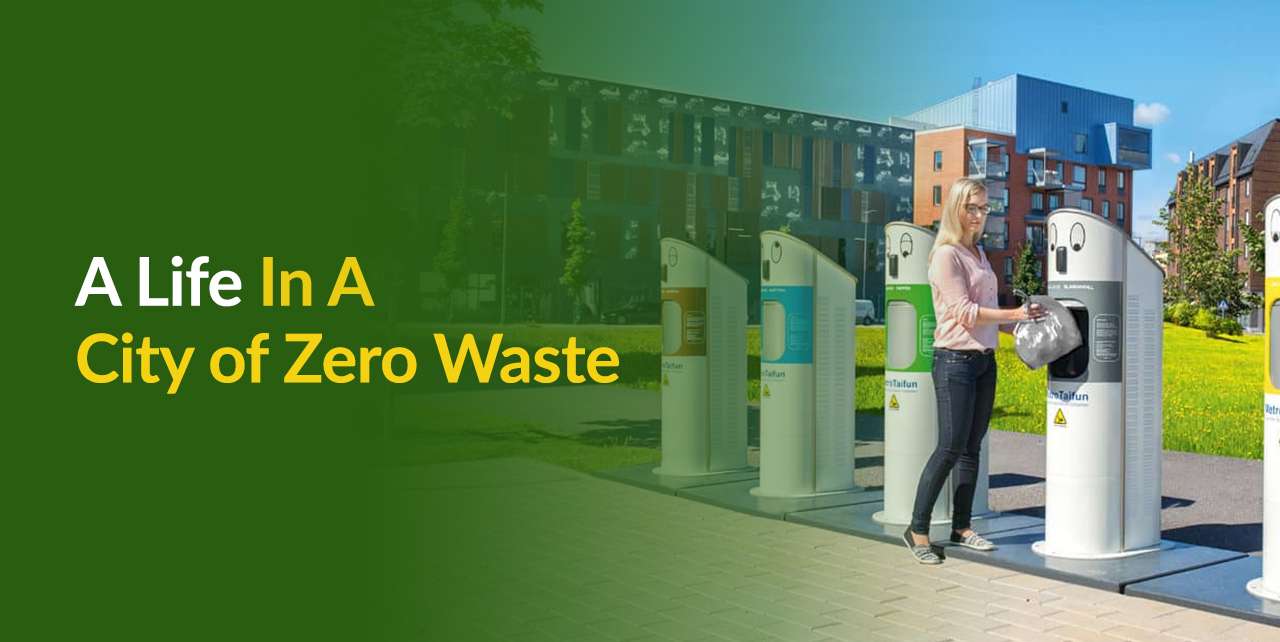In recent years, the concept of zero waste cities, also known as circular cities, has gained significant traction as a sustainable solution to combat environmental degradation and promote resource efficiency. But what exactly is a zero waste city, and how can it transform the way we live and interact with our urban environments?
Let’s explore the fundamentals of zero waste cities, their benefits, and the strategies needed to transition towards a circular system.
What is a Zero Waste City?
A zero waste city is not just a utopian vision; it’s a tangible economic system where the value and utility of infrastructure, products, components, materials, and nutrients are preserved for as long as possible. The Zero Waste Cities approach is a continuous effort to phase out waste – not by burning or landfilling it – but instead by creating and implementing systems that do not generate waste in the first place.
In essence, it’s about shifting from a linear, take-make-dispose model to a circular one, where waste is minimized, and resources are continuously reused, recycled, and regenerated.
Benefits of Living in a Zero Waste City
1. Closed Material Loop
Instead of discarding materials after use, a zero waste city ensures that existing resources are continually cycled, reducing the need for resource extraction and minimizing waste generation.
2. Minimized Resource Extraction
By maximizing resource efficiency and reducing consumption, zero waste cities minimize the need for resource extraction, thereby preserving natural habitats and biodiversity.
3. Lower Emissions
Through sustainable practices such as waste reduction, recycling, and renewable energy adoption, zero waste cities contribute to lower emissions, mitigating climate change and protecting the environment.
Strategies to Move to a Circular System
To transition towards a zero waste city, several key strategies must be implemented,
1. Rethink
Redesign the current linear system by promoting eco-design, sustainable consumption, and waste prevention initiatives.
Eco-design Advocacy: Collaborate with designers and manufacturers to prioritize eco-friendly materials, durability, and recyclability in product design.
Sustainable Consumption Campaigns: Educate on the benefits of conscious consumption, encouraging to choose products with minimal packaging and longer lifespans.
Waste Prevention Initiatives: Implement policies that discourage the production of unnecessary waste, such as single-use plastics bans and incentives for businesses to adopt zero-waste practices.
2. Regenerate
Protect and restore natural resources through habitat conservation, reforestation, and sustainable land-use planning.
Habitat Conservation: Establish protected areas and green spaces within the city to preserve biodiversity and provide natural habitats for wildlife.
Reforestation Projects: Plant native trees and vegetation to restore degraded ecosystems, enhance soil health, and mitigate climate change effects like urban heat islands.
Sustainable Land-Use Planning: Integrate principles of sustainable development into urban planning, prioritizing mixed land use, compact development, and green infrastructure.
3. Reduce
Minimize resource usage and waste generation through efficiency measures, sustainable production processes, and lifestyle changes.
Resource-Efficient Practices: Encourage industries to adopt technologies that optimize resource usage and minimize waste generation, such as lean manufacturing and energy-efficient processes.
Promotion of Sustainable Lifestyles: Advocate for behaviors like minimalism, vegetarianism, and alternative transportation methods to reduce overall resource consumption and environmental impact.
Energy Conservation Measures: Invest in energy-saving technologies and promote energy conservation practices among businesses and residents to reduce energy consumption and associated waste.
4. Reuse
Extend and intensify the use of existing resources through product reuse, repair, and sharing initiatives.
Product Reuse Programs: Establish community-based initiatives and platforms for swapping, borrowing, or donating items to extend their useful life and reduce the demand for new products.
Repair Cafés: Set up repair centers where skilled volunteers can help repair household items, electronics, and clothing, fostering a culture of repair and reuse.
Sharing Economy Platforms: Support the growth of sharing platforms for goods such as tools, appliances, and vehicles, promoting resource sharing and collaborative consumption.
5. Recover
Maximize the recovery of resources through recycling, composting, and waste-to-energy technologies, reintroducing them back into the economy.
Comprehensive Recycling Infrastructure: Invest in efficient recycling facilities and expand recycling programs to capture a wider range of materials, including plastics, glass, metals, and electronics.
Composting Initiatives: Provide composting bins and educational resources to encourage residents and businesses to compost organic waste, diverting it from landfills and enriching soil health.
Waste-to-Energy Technologies: Explore innovative waste-to-energy solutions such as anaerobic digestion and incineration with energy recovery to extract value from non-recyclable waste streams while reducing greenhouse gas emissions.
Embrace the Circular Economy SuperSeries
At Fuller Academy, we recognize the pivotal role of zero waste cities in shaping a sustainable future. That’s why our Introduction to Circular Economy SuperSeries and Circular Economy for Plastics SuperSeries are the best courses to start your journey towards a zero waste city. Participants can delve deeper into the concept of circularity, learn about innovative strategies and case studies, and gain practical insights into building resilient, zero waste communities. Join us on this transformative journey towards a more sustainable world!


